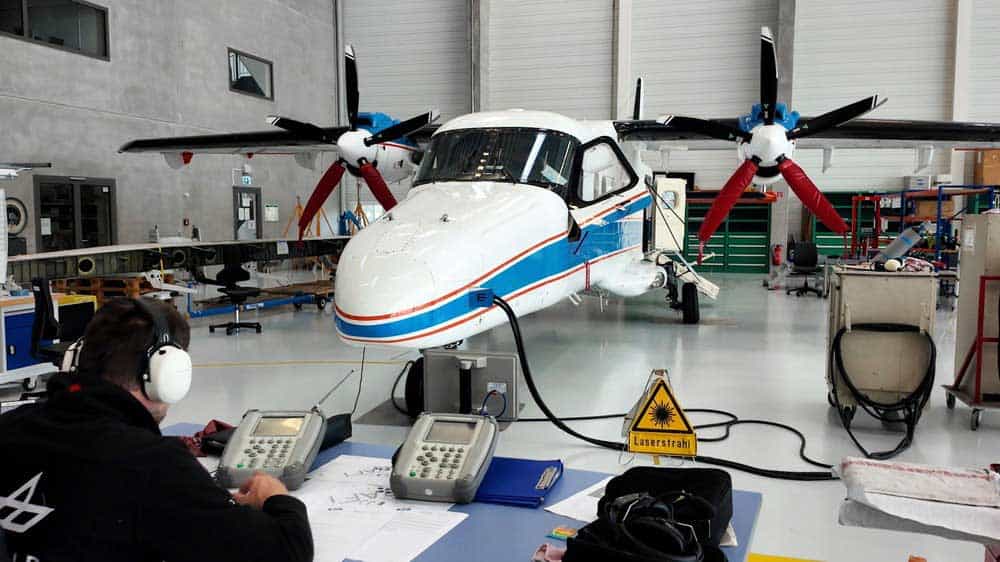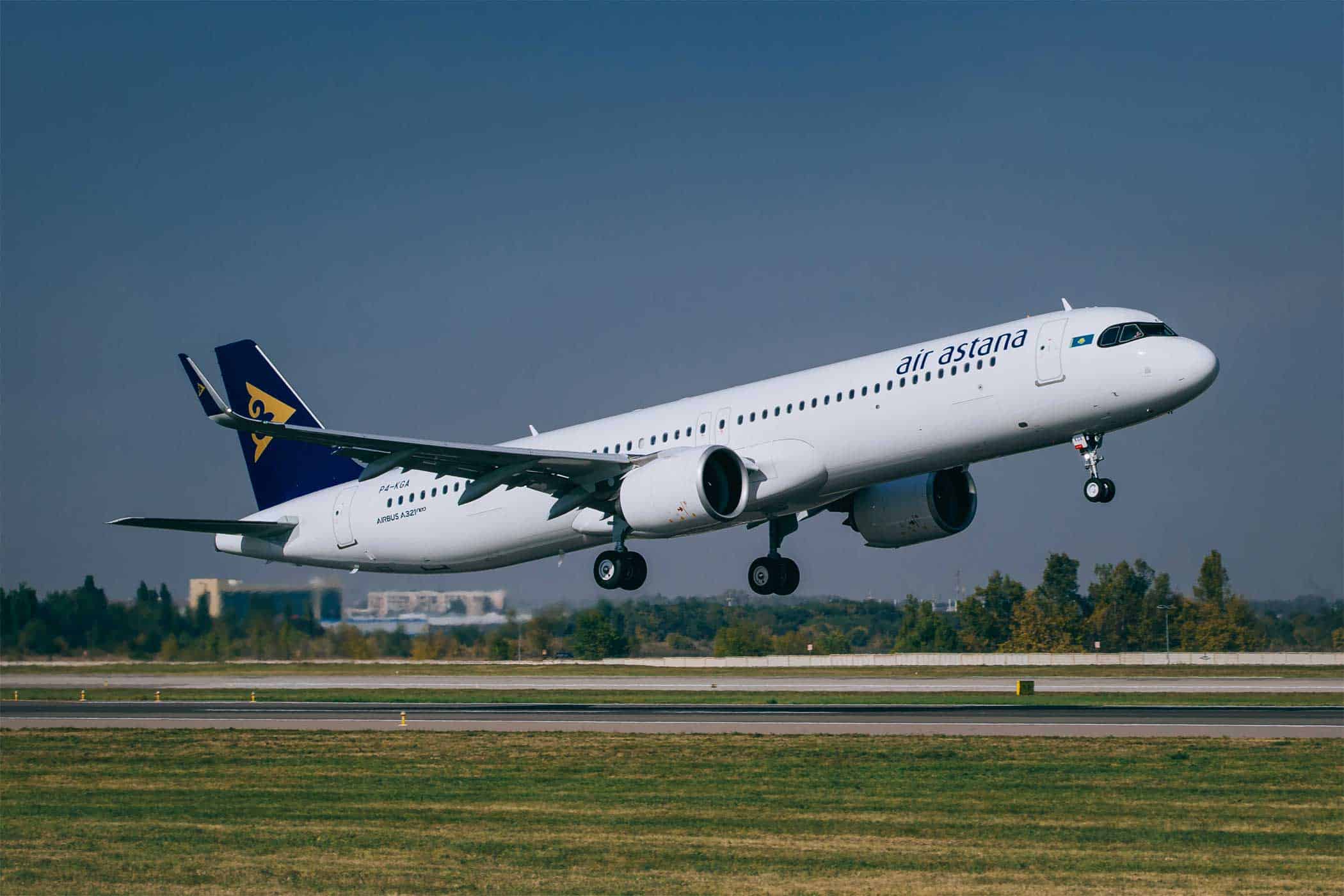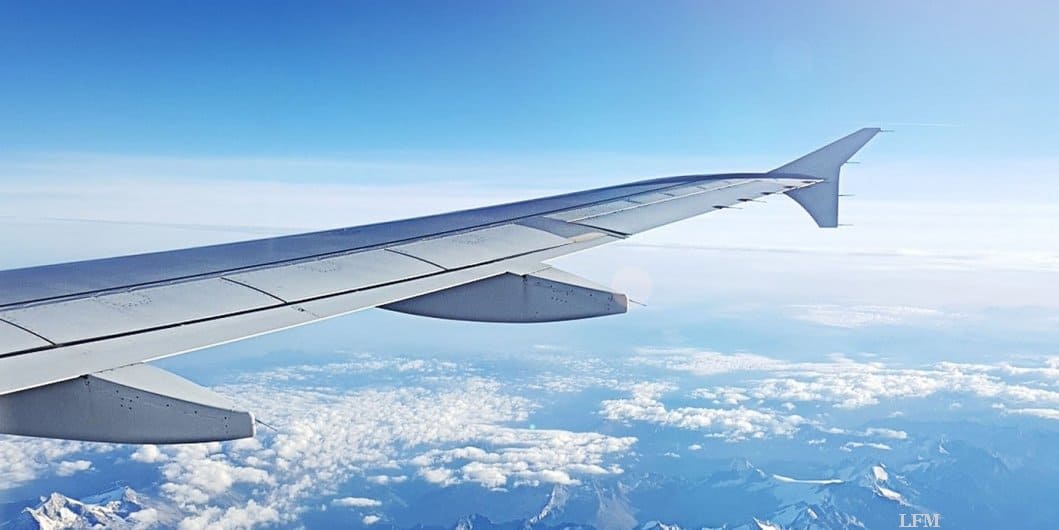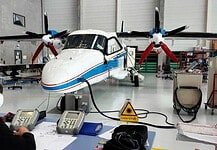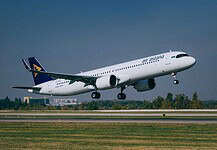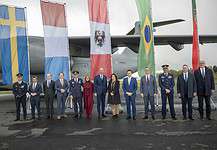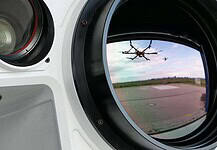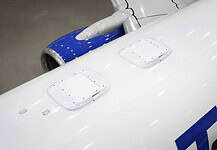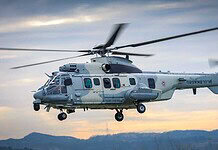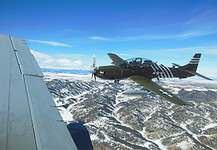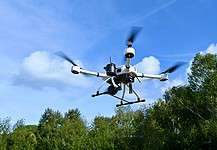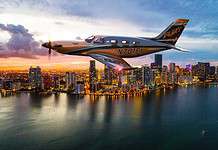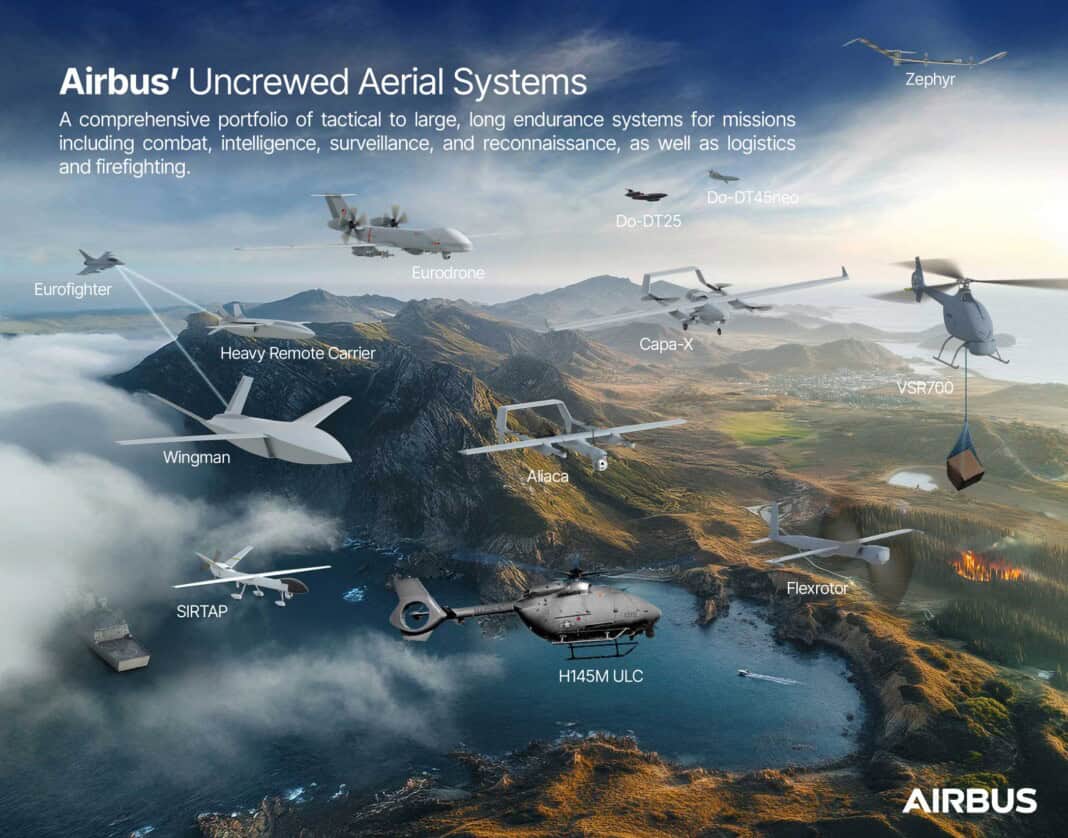
This site is also available on:
Deutsch
Introduction to the further development of tactical unmanned aerial systems
The rapid development of tactical unmanned aerial systems (UAS) has significantly increased the importance of these technologies for defense and security. Recognizing this momentum, Airbus has consolidated its small and medium-sized UAS systems from the Survey Copter, Aliaca, and Capa-X offerings into a comprehensive portfolio, which will be managed by the Airbus Helicopters division. The goal is to be able to offer defense and security customers targeted and efficient, consistent solutions, while intensifying collaboration between the helicopter, defense, and space divisions. This consolidation is not only a strategic step but also a reflection of the growing importance of drone technologies in modern military and parapublic applications.
The importance of unmanned aerial systems for modern operations
Unmanned aerial vehicles offer indispensable capabilities for real-time reconnaissance and surveillance. Their ability to deploy high-resolution sensors for ISTAR (Intelligence, Surveillance, Target Acquisition, and Reconnaissance) operations makes them crucial tools for long-term ISR (Intelligence, Surveillance, and Reconnaissance) missions. These capabilities primarily benefit maritime and expeditionary forces, but also enable precise target acquisition on the battlefield. In addition, unmanned systems perform connecting tasks in parapublic areas of operation, such as firefighting or police work, where comprehensive surveillance and rapid deployment are crucial.
The integration of Aliaca and Capa-X into the Airbus Helicopters portfolio creates synergies by combining innovative strength and technical expertise. The close integration with manned helicopters using HTeaming technology multiplies the operational possibilities: The UAS systems can significantly extend the sensor range, enabling individual crews to detect threats early and respond in a targeted manner – a capability that significantly increases effectiveness in complex mission scenarios.
Portfolio development and technical specifications of tactical drones
Survey Copter, based in Pierrelatte, southern France, has many years of expertise in the development and maintenance of light tactical drone systems for civil and military applications. Since 1996, it has delivered over 300 unmanned systems to national and international users. Airbus Helicopters is building on this foundation with a diverse product range that reflects current defense requirements.
The Aliaca system is a 25-kilogram UAS capable of carrying a payload of up to 3 kilograms for up to six hours, and has established itself as a robust imaging tool for reconnaissance and decision support. The Flexrotor, also weighing 25 kilograms, enables even greater range and endurance, but can carry payloads of up to 8 kilograms for up to 12 hours. For particularly demanding and variable missions, the Capa-X is available. It weighs 120 kilograms and can carry a payload of up to 20 kilograms, and can be flexibly adapted to different operational areas and mission profiles. This range is complemented by the VSR700, a discreet 750-kilogram drone specifically designed for maritime operations, cargo transport, and combat tasks. This sophisticated portfolio covers a wide range of modern operational requirements and offers users new options for reconnaissance, surveillance, and operational flexibility.
Advanced UAS technologies in defense and space
Complementing its consolidated offering of small and medium-sized drones, Airbus is developing a range of other multi-mission unmanned systems in the Defence and Space sector, based on technological versatility and strategic importance. Of particular note is the Eurodrone, a next-generation large-wing, long-range, remotely piloted aircraft system that contributes to strengthening European defence capabilities and strategic sovereignty. Furthermore, the advanced tactical UAS SIRTAP is used for demanding day and night reconnaissance missions over land and sea. The solar-electric stratospheric platform Zephyr represents a unique High Altitude Platform Station (HAPS) enabling long-term surveillance at high altitudes. Airbus also offers target training drones relevant for training purposes and simulating threat scenarios.
In addition, Airbus has developed connected solutions for the interaction of manned and unmanned aircraft. Crew-uncrewed teaming allows aircraft and helicopter crews to take control of tactical UAS in real time. This innovative approach significantly extends the operational range of sensors beyond direct line of sight and enables significantly more efficient use of manned platforms by enabling UAS to perform critical tasks for which manned aircraft are not optimally suited.
Conclusion: Groundbreaking integration for flexible and powerful drone systems
The consolidation of the Survey Copter, Aliaca, and Capa-X UAV portfolios under the leadership of Airbus Helicopters underscores the Group’s strategic focus on providing needs-based and scalable solutions for modern defense. This integration contributes to the creation of a center of excellence that not only provides a wide range of light and medium tactical drones but also fosters synergies in further development and support.
The diverse applications range from naval and land operations to specialized roles in observation and target acquisition on the battlefield. These systems are also increasingly valued in tasks such as law enforcement and firefighting. With the simultaneous development of large and sophisticated UAS technologies within the Defence and Space Division, Airbus reflects a consistent commitment to innovation that will have a lasting impact on the defence industry.
Crew-uncrewed teaming also deserves special attention. It not only enhances combat and surveillance capabilities but also revolutionizes the integration of manned and unmanned systems in an operational environment. This strategic direction makes Airbus a leading provider in a dynamically developing segment of the defense market and represents an important step toward future-oriented, networked aviation systems.

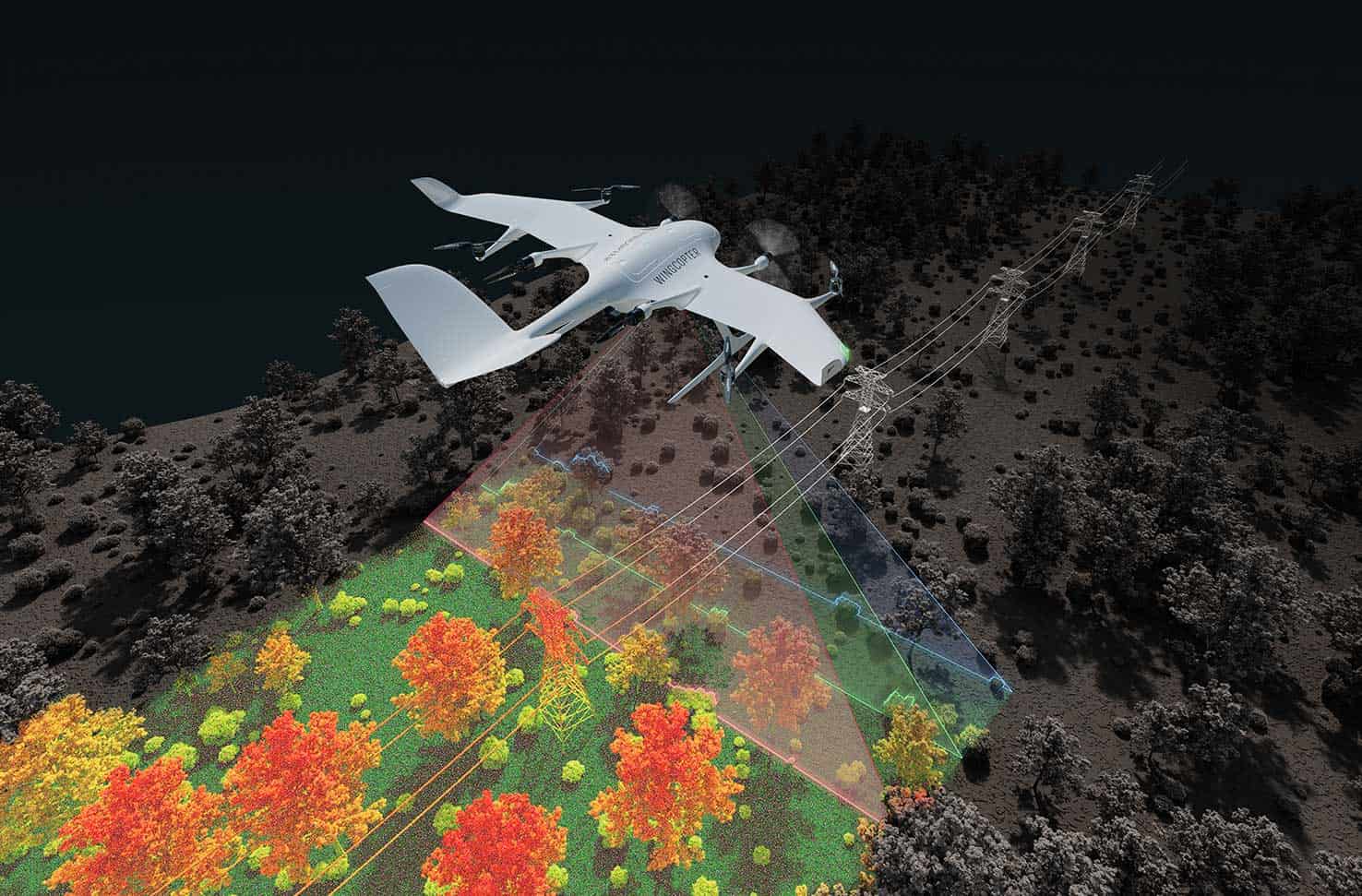 Wingcopter introduces new LiDAR survey drones (Wingcopter introduces new LiDAR survey drones)
Wingcopter introduces new LiDAR survey drones (Wingcopter introduces new LiDAR survey drones) Rotor R550 Sprayhawk UAV receives approval in Brazil (Rotor R550 Sprayhawk UAV receives approval in Brazil)
Rotor R550 Sprayhawk UAV receives approval in Brazil (Rotor R550 Sprayhawk UAV receives approval in Brazil)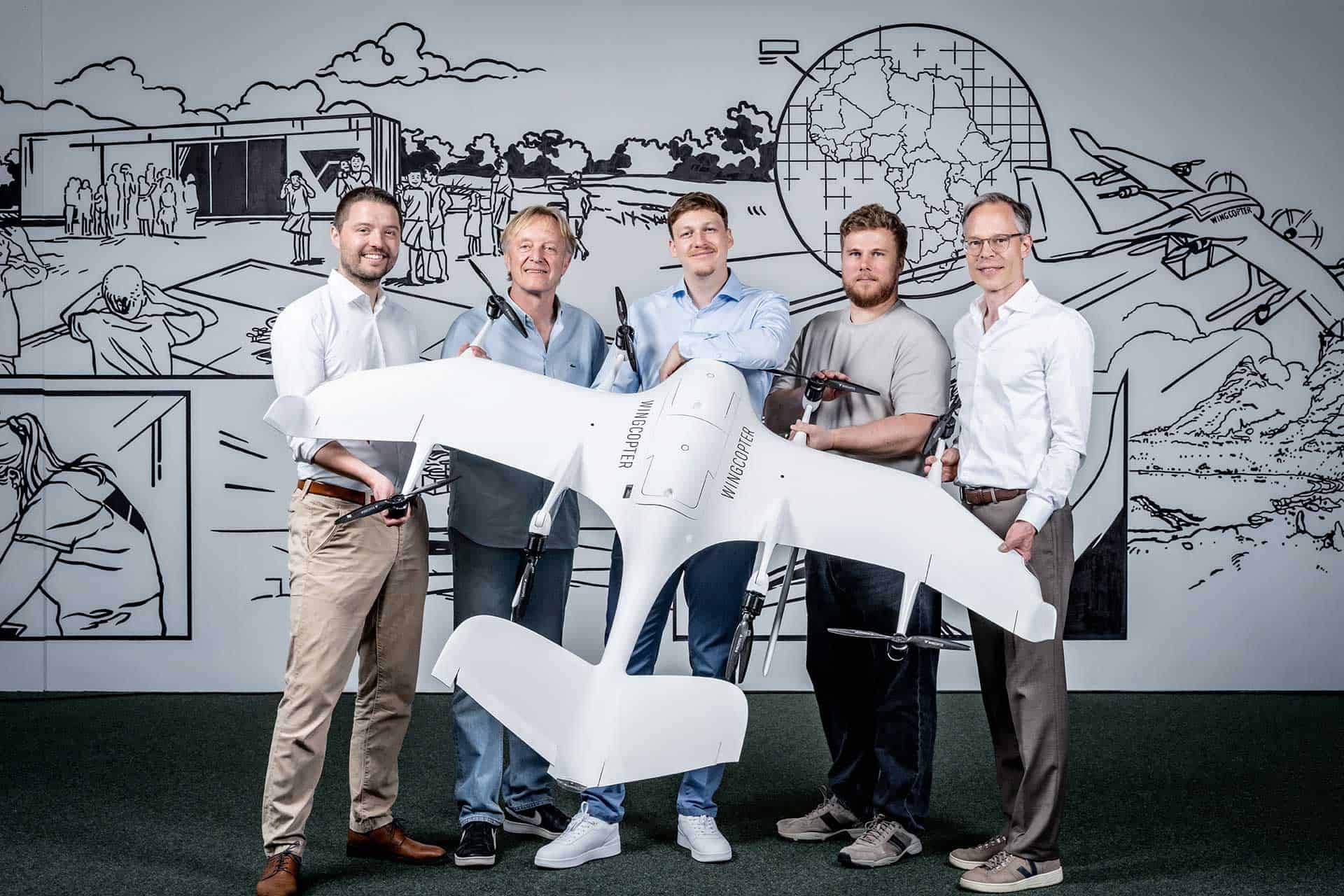 Drone start-up Wingcopter wins new investor (Drone start-up Wingcopter wins new investor)
Drone start-up Wingcopter wins new investor (Drone start-up Wingcopter wins new investor)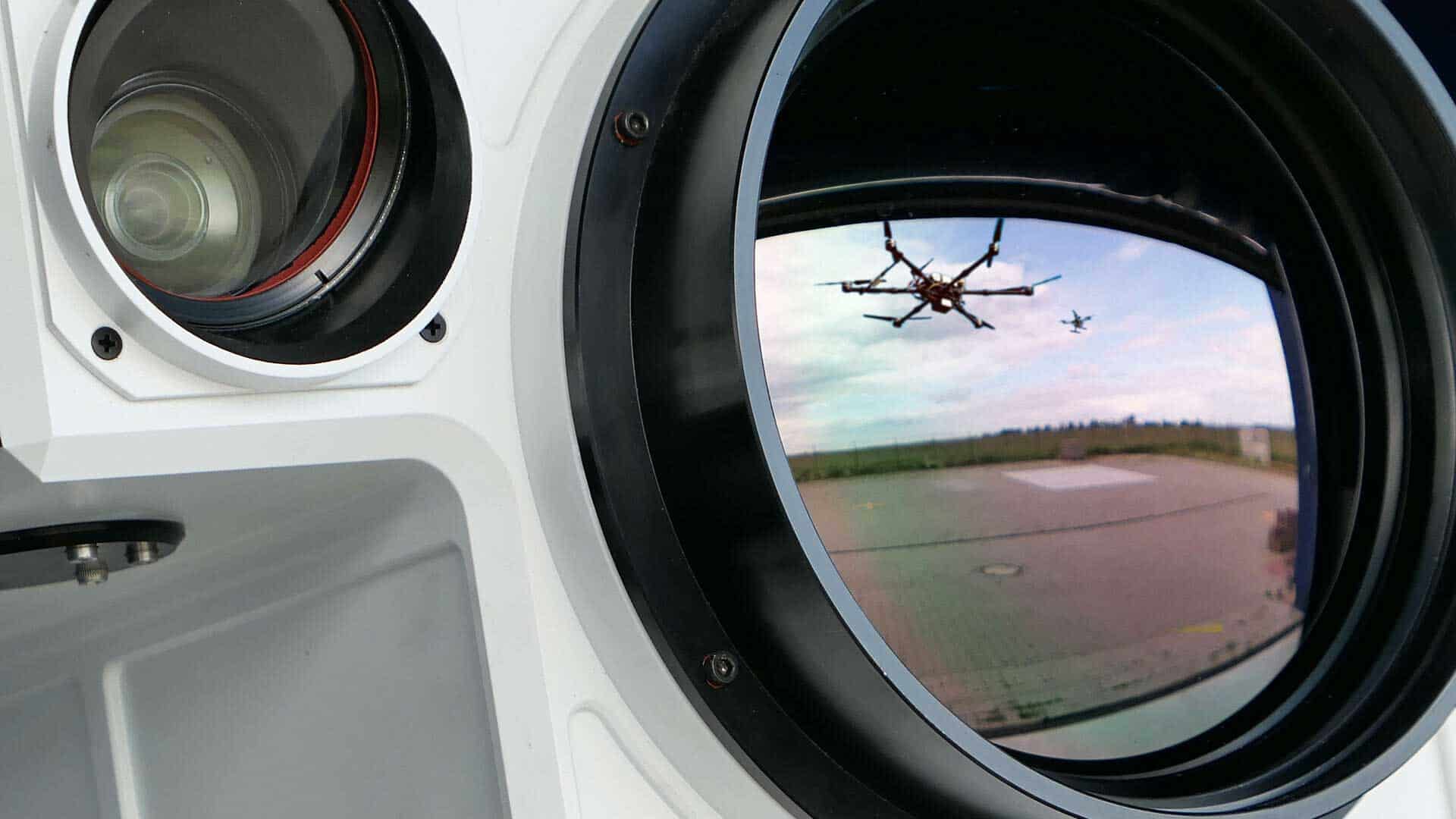 Drone defense: Neutralization of unwanted drones in sensitive areas (Drone defense: Neutralization of unwanted drones in sensitive areas)
Drone defense: Neutralization of unwanted drones in sensitive areas (Drone defense: Neutralization of unwanted drones in sensitive areas)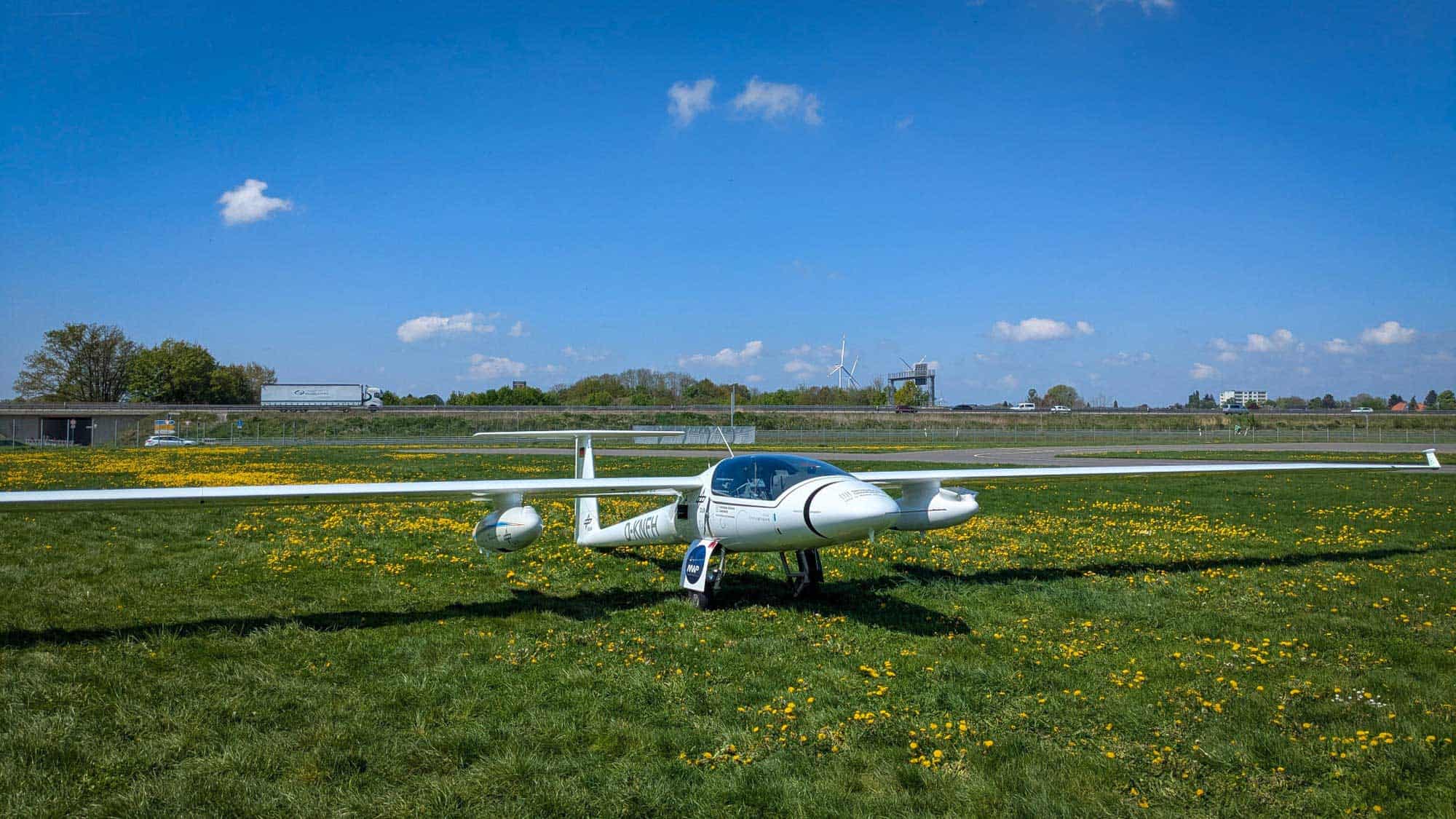 DLR’s MACS camera system helps with police search in the Westerwald (DLR’s MACS camera system helps with police search in the Westerwald)
DLR’s MACS camera system helps with police search in the Westerwald (DLR’s MACS camera system helps with police search in the Westerwald)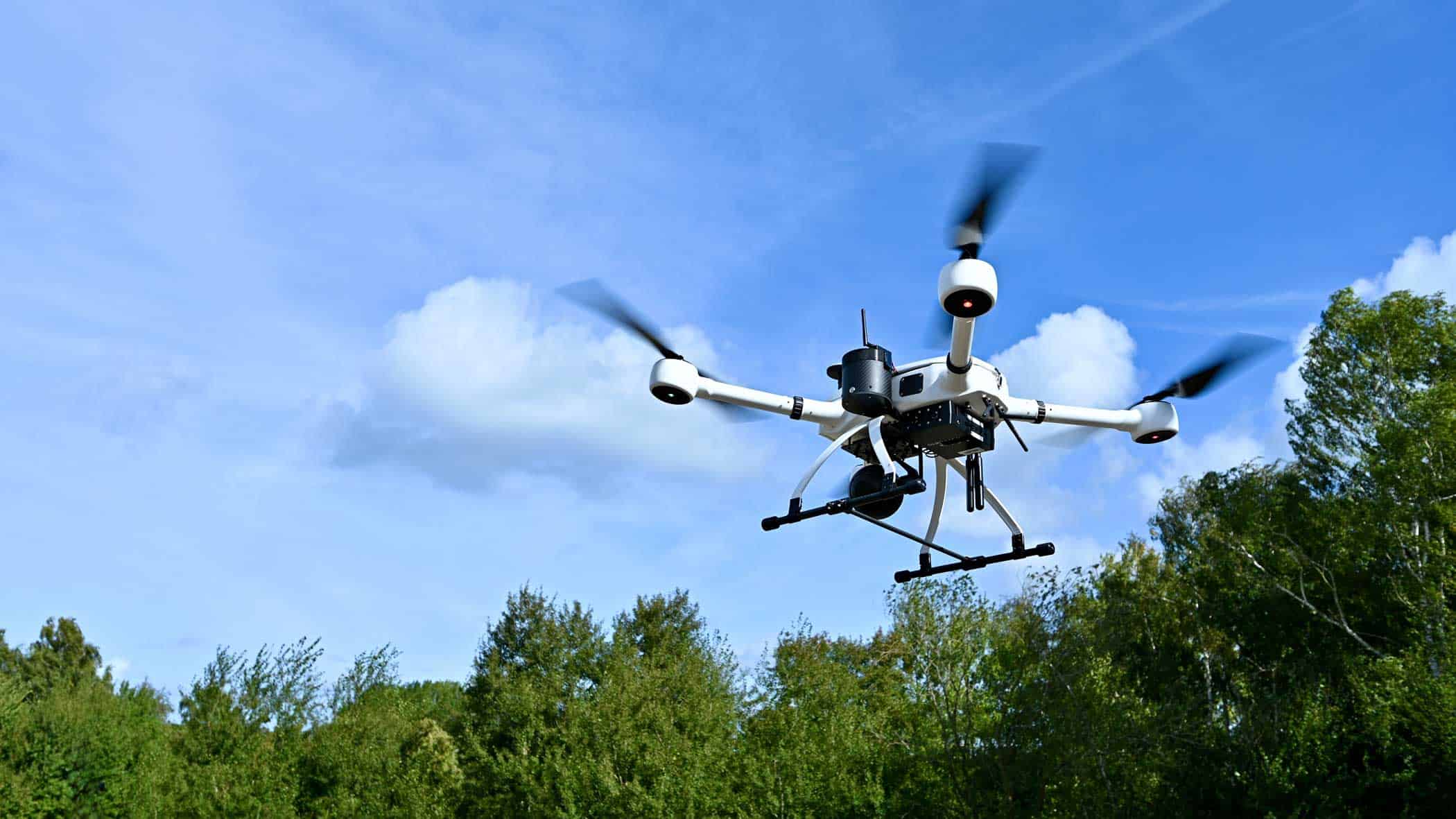 Automated 5G drone operations in disaster and rescue operations (Automated 5G drone operations in disaster and rescue operations)
Automated 5G drone operations in disaster and rescue operations (Automated 5G drone operations in disaster and rescue operations)